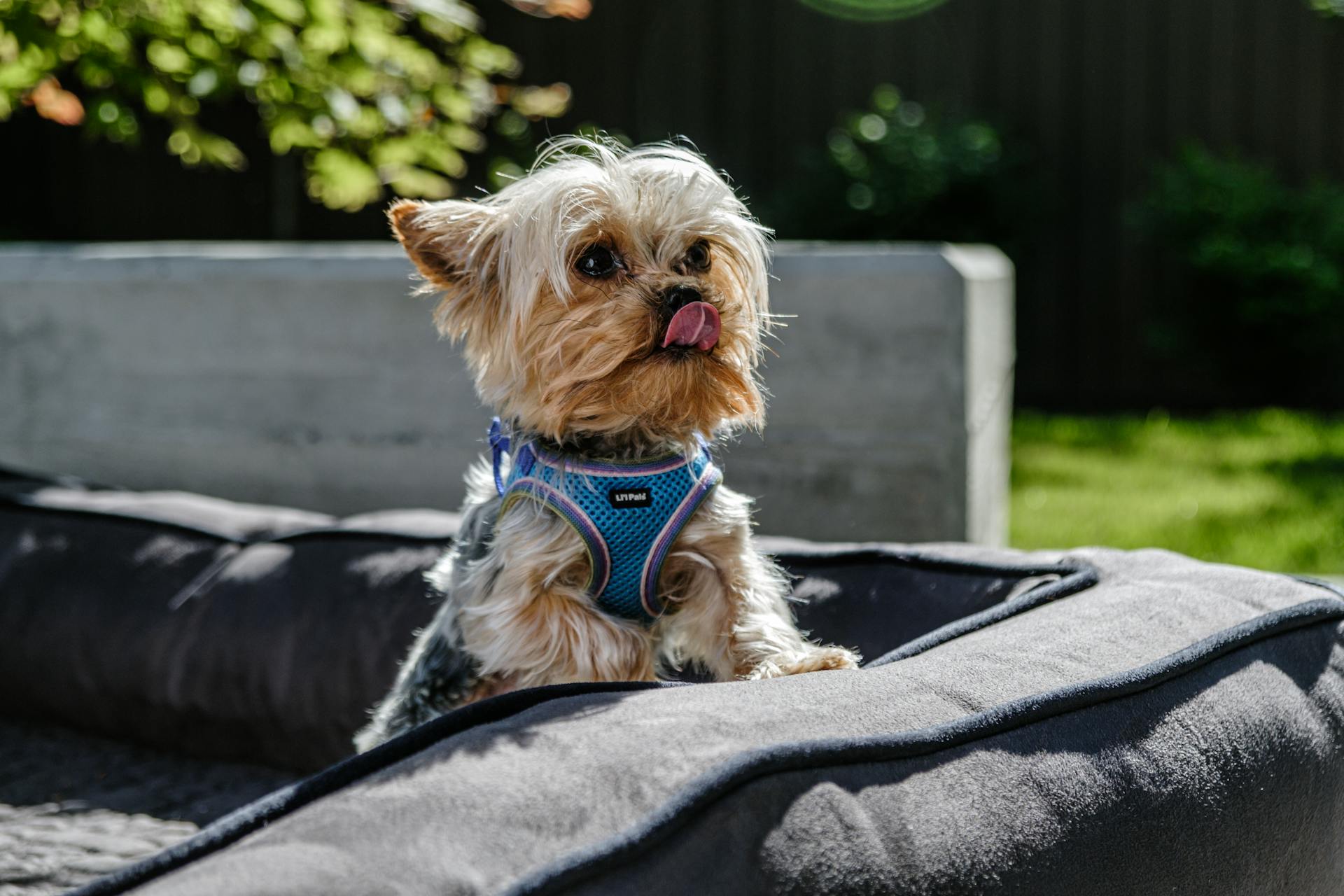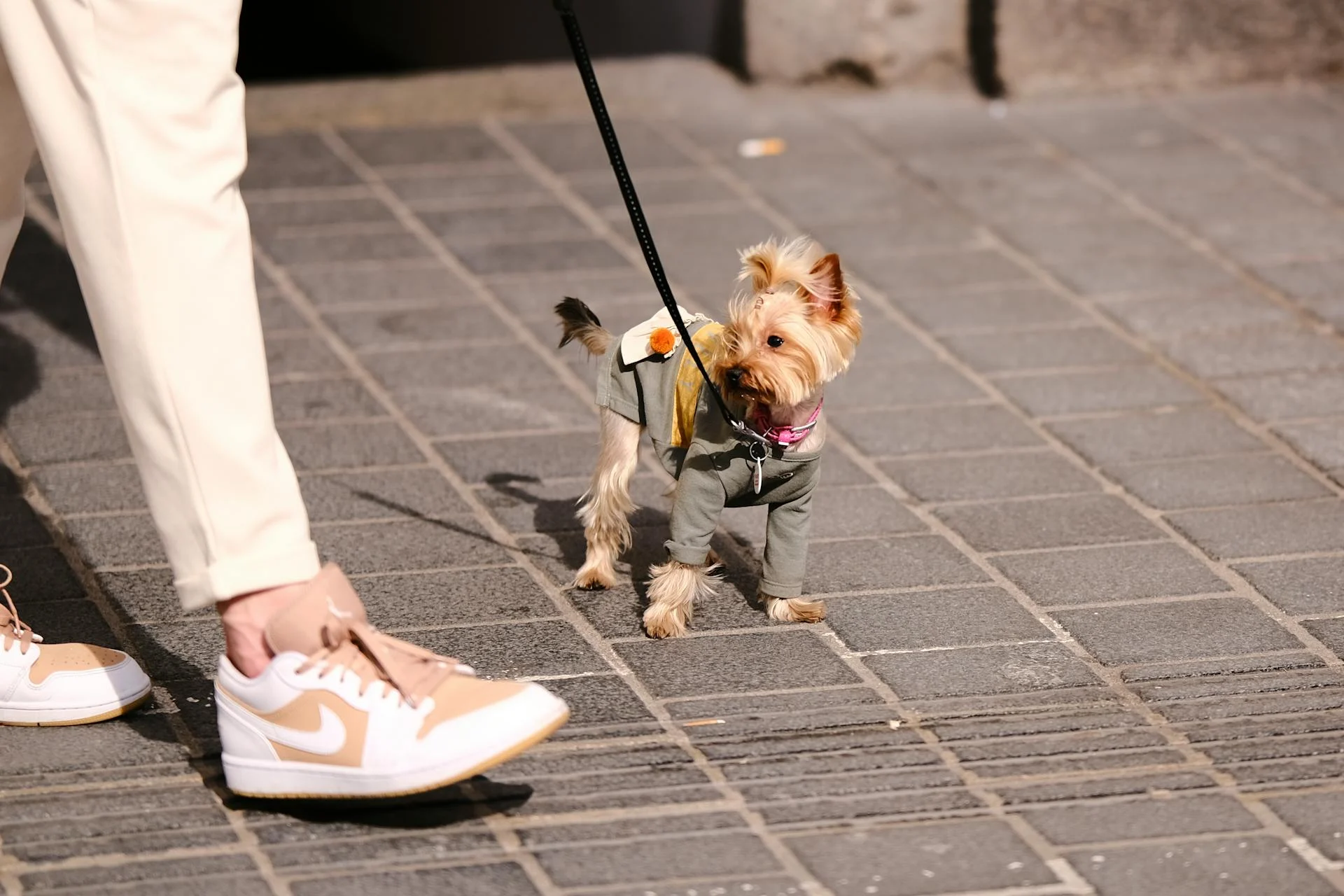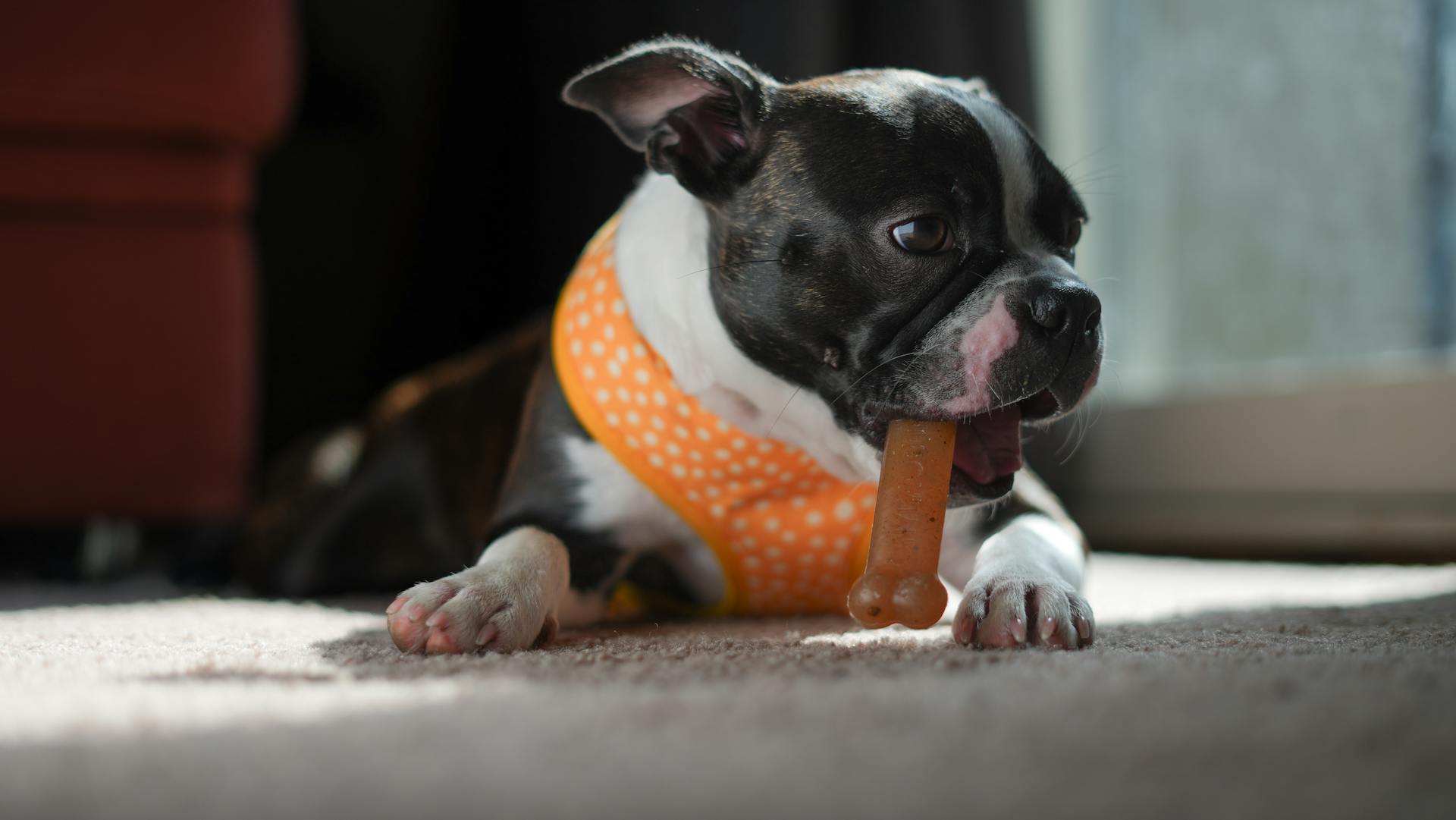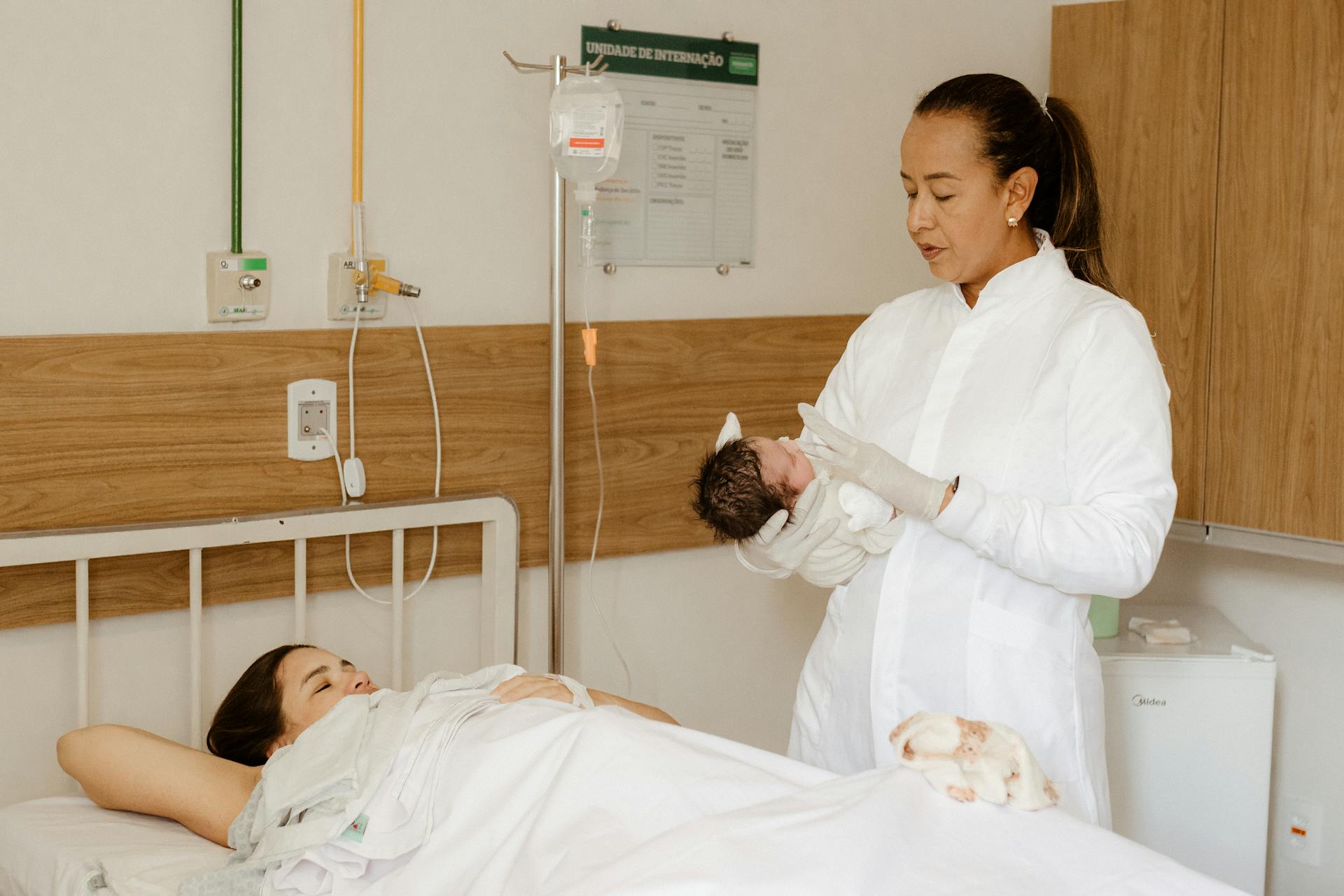
As a Yorkie owner, it's essential to know the signs of impending birth and what to expect during the process. A Yorkie dog giving birth can be a natural and uneventful experience if you're prepared.
Typically, a Yorkie's labor lasts between 6 to 12 hours, with the first stage lasting around 6 hours.
Keep an eye out for signs of labor, such as restlessness, pacing, and whining, which can start as early as 24 hours before the birth.
A Yorkie's water breaks can be a clear sign that labor is imminent, and it's essential to be prepared to assist her during this time.
As a Yorkie owner, it's crucial to have a safe and clean environment ready for your dog to give birth.
Preparing for Whelping
Preparing for whelping is a crucial step to ensure a safe and healthy delivery for your Yorkie. You'll need to start preparing well before your dog goes into labor.
To get started, you'll want to set up a whelping box, which should be warm and comfortable. A quiet, secluded room kept at around 22°C is ideal.
A large rigid cardboard box or a pre-made whelping box will work, and it's a good idea to line it with clean, washable, absorbent bedding, such as towels. The box should be big enough for your dog to stretch out and turn around in.
To prevent newborn puppies from escaping, the box should be high enough for your dog to step over but low enough for the puppies to stay inside. Fitted with railings or barriers on the inside will also help prevent any puppies from being squashed against the walls.
Here are some key specifications for your whelping box:
Things Needed
To get ready for whelping, you'll need a few essential things. A whelping box is a must-have, and you can either buy one or make your own using a large rigid cardboard box.
A whelping box needs to be warm and comfortable, so make sure it's at a comfortable temperature, around 22°C. This will help your dog feel relaxed and calm during labor.
You'll also want to line the whelping box with clean, washable, and absorbent bedding, like towels. This will make cleanup easier and keep your dog and puppies clean.
The box should be big enough for your dog to stretch out and turn around in, but not so big that she can't easily step over the sides. And, of course, it needs to be high enough to prevent puppies from escaping, but low enough for your dog to step over.
Here are the key features your whelping box should have:
- Warm and comfortable
- Quiet, secluded room at around 22°C
- Clean, washable, absorbent bedding (like towels)
- Big enough for your dog to stretch out and turn around in
- High enough to prevent puppies from escaping, but low enough for your dog to step over
- Fitted with railings/barriers on the inside to prevent puppies from being squashed against the walls
Pictures and Stories
As you prepare for whelping, it's essential to have a plan in place for capturing the special moments.
You'll want to have a camera or phone ready to take pictures of the puppies as soon as they're born. This is because the first few hours are a critical time for bonding and imprinting.
A warm and safe environment is crucial for a successful whelping. You can create a whelping box or area with a heat source, such as a heat lamp or warm towels, to keep the mother and puppies cozy.
Keep a record of the whelping process, including the time and order of births, to help you track the health and development of the puppies.
Having a whelping kit on hand can be a lifesaver in case of an emergency. This should include items like scissors, a towel, and a thermometer.
Make sure to take plenty of pictures and videos of the puppies as they grow and develop. This will help you track their progress and create lasting memories.
Pregnancy and Labor
Pregnancy in Yorkies can be a bit tricky to detect, especially in the first few weeks. A Yorkie might not show any noticeable signs of pregnancy until around week 3 or 4, when her belly starts to become larger.
If you suspect your Yorkie is pregnant, it's essential to be gentle with her and ensure she has a comfortable place to rest. She may start nesting, collecting items to create a cozy spot.
To confirm pregnancy, you can look out for signs such as a more prominent belly, increased appetite, and weight gain. However, the only guaranteed way to confirm pregnancy is through an abdominal X-ray or blood tests, which may not be accurate until at least 3 weeks into the pregnancy.
A Yorkie's pregnancy typically lasts around 63 days, but can range from 58 to 68 days. If it's past 68 days, it's time to consult with your veterinarian to ensure everything is okay.
Here are some key things to keep in mind during pregnancy:
- Gentle treatment and a comfortable place to rest
- Ensure she has enough food and water, and consider high-quality meals
- Limit physical activities, but still provide regular walks
- Avoid self-medicating with supplements unless advised by your vet
Signs of Pregnancy
If you suspect your Yorkie might be pregnant, it can be tricky to confirm at first. In the first few weeks, there isn't a guaranteed method to determine if she's pregnant or not.

You can take her to the vet for an abdominal X-ray, but it won't show anything until later in the pregnancy. Blood tests are also an option, but they won't be accurate until a minimum of 3 weeks has passed.
As your Yorkie's pregnancy progresses, some clear signs will start to appear. These include:
- She might feel a bit more tired than usual and in most cases a bit grumpy,
- Her nipples will grow in size which you’ll notice,
- She might start to collect things such as toys and other objects to create a “nest” – something many pregnant dogs do to create a comfortable place for themselves,
- She might start grooming herself way more than she used to,
- Her belly might become firmer than it was before;
As the weeks go by, these signs will become more noticeable. By week 3 or 4, her belly will become larger, and that's a clear indicator that new puppies are on the way.
Pregnancy: Puppy Delivery
Pregnancy can be a challenging time for your Yorkie, and delivery is no exception. The average length of pregnancy for a Yorkie is around 63 days, but it can range from 58 to 68 days.
As the delivery begins, it's essential to stay calm and provide a safe and comfortable environment for your Yorkie. Place a lot of towels or newspaper underneath her to catch the puppies, and make sure they're warm.
On a similar theme: Giving Birth Days
The puppies will likely come out in an amniotic sac, and it's not uncommon for there to be a pause between deliveries, sometimes lasting for an hour or more. The mother will typically take care of the puppies, ripping the sac and licking them clean.
Here's a rough idea of what you can expect during delivery:
It's always best to let a vet handle the delivery, but if you're in a situation where you need to help your Yorkie, just remember to stay calm and let her do her work.
Whelping Process
The whelping process can be a long and unpredictable one, but knowing what to expect can help you be a calm and supportive presence for your Yorkie.
On average, giving birth to an entire litter takes 3-12 hours from the start of contractions/straining, but most dogs give birth to their whole litter within 6 hours.
If the process takes longer than 24 hours, the risk of a problem becomes very high.
Your Yorkie will need to eat, rest with her pups, bond with them, and feed them after giving birth, so make sure they are in a quiet, comfortable space where they won’t be disturbed.
If your Yorkie isn’t comfortable and relaxed after whelping, there is a risk that she may reject her puppies and refuse to feed them.
Here are some general guidelines to keep in mind during the whelping process:
- Monitor your Yorkie's labor for signs of distress or complications.
- Keep an eye on the time and be prepared to seek veterinary care if the process takes longer than 24 hours.
- Provide a quiet and comfortable space for your Yorkie to give birth and bond with her pups.
- Encourage your Yorkie to eat and bond with her pups after giving birth.
Potential Complications
Metritis is an uncommon, but very serious problem that can affect your Yorkie after giving birth. It's caused by an infection inside the womb and can lead to symptoms like low energy, reduced appetite, high temperature, and a smelly vaginal discharge.
If you notice any of these symptoms, contact your vet for advice immediately. It's normal for your Yorkie to have some vaginal discharge for up to 6 weeks after whelping, but it shouldn't smell.
Behavioural/mothering problems can also occur, especially if your Yorkie has had a stressful birth or needed a lot of help from you or the vet. To reduce the chance of a problem, set up a whelping box in a warm, quiet, calm place before she gives birth.
Take a look at this: Vets Dog Treats
Bleeding

Bleeding during whelping is a cause for concern. You will often see some fluid and bloody discharge, but if it's more than a few drops of blood, it's abnormal and should be checked by your vet immediately.
Any excessive bleeding can be a sign of complications, so it's essential to monitor your Yorkie's condition closely.
Umbilical Cord Problems
Umbilical cord problems can be a concern for new puppy owners.
Most dogs nibble through their puppy's umbilical cords as soon as they're born, which is a normal process.
It's not essential to remove the umbilical cord immediately, but leaving it too long can cause problems.
If any of your puppies still have their umbilical cords attached a few hours after birth, you may need to tie and cut them off yourself.
You should always call your vet for advice on how to properly tie and cut an umbilical cord, as doing it incorrectly can cause an infection or hurt the puppy.
Bleeding umbilical cords can also occur if the mother overenthusiastically nibbles them, which may require attention from a vet.
Check this out: Puppy Yorkie Dogs
Stillborn Puppies
If your dog gives birth to any dead puppies, it's essential to have her checked over by a veterinarian as soon as possible.
Always have your dog checked over if she gives birth to any dead puppies.
Consider reading: Can I Bathe My Dog before She Gives Birth?
Fading or Unwell Puppies
If you notice any of your dog's puppies aren't breathing or moving, contact your vet immediately.
Puppies that stop breathing or aren't able to move may be showing signs of distress.
Contact your vet right away if you notice your puppies aren't able to feed.
Your vet can help determine the cause of your puppy's illness and provide the necessary care.
Frequently Asked Questions
How many puppies does a Yorkie have the first time?
Typically, a first-time Yorkie litter has 1-4 puppies, influenced by genetics, health, and breeding practices
Sources
- https://www.cuteness.com/article/yorkie-give-birth
- https://www.pdsa.org.uk/pet-help-and-advice/pet-health-hub/other-veterinary-advice/whelping-a-guide-to-your-dog-giving-birth
- https://yorkies-gram.com/everything-you-need-to-know-about-yorkie-pregnancy/
- https://westseattleblog.com/forums-2/topic/tips-on-whelping-a-yorkie/
- https://www.dogbreedinfo.com/whelpingpictures.htm
Featured Images: pexels.com


